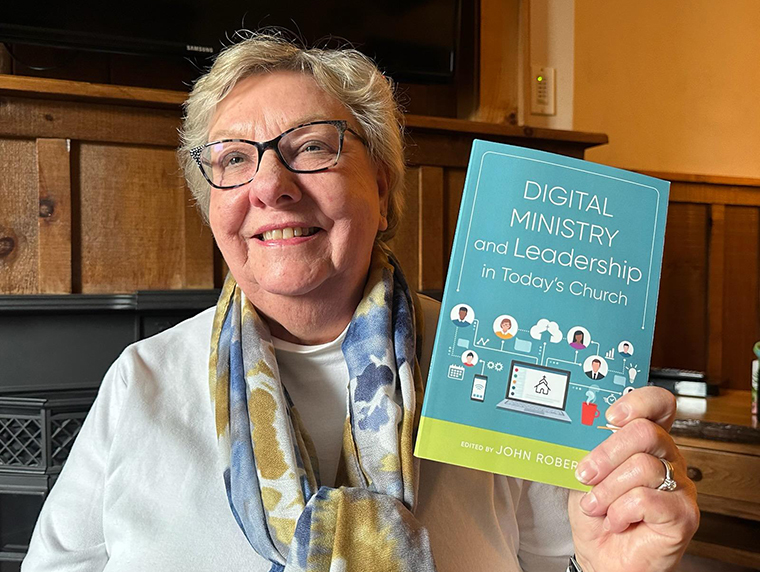Local faith educators contribute to new book
By Eileen Jevis
Staff writer
Marge Babcock, former diocesan employee and parishioner at St. Augustine’s Parish in Baldwinsville, was a contributing writer in the recently published book, “Digital Ministry and Leadership in Today’s Church.” The book discusses how COVID-19 greatly impacted how society communicates and how online tools such as video conferencing, streaming and virtual learning platforms allow participants to engage on a personal level.
Babcock worked in adult faith formation at Christ the King Church in Liverpool for five years, before moving to the faith-formation office at the Diocese in 2000. She retired in 2019 and currently works as a spiritual director at the Spiritual Renewal Center in Syracuse.
During the pandemic, dioceses across the country had to quickly pivot and adapt in order to remain connected to their parishioners. Church leaders, parents and students had to modify typical in-person learning practices.
“Through the COVID-19 pandemic, many parishioners and faith-formation leaders have done amazingly creative work in faith formation, reaching and engaging people of all ages with the tools and hybrid and media they never imagined using in 2019,” said the book’s author John Roberto.
Hybrid learning models use a combination of in-person and virtual interaction and have become the norm for faith-formation instruction and preparation. Andrea Slaven, M.Ed.; M.A., is the director of the Office of Child and Family Catechesis at the Diocese. She also contributed to the book. Slaven said the diocese has been encouraging the use of technology in faith formation for several years, even prior to COVID.
Slaven agrees with author Roberto that varied methods of teaching and learning have provided participants the opportunity to remain engaged in a digitally connected world. “Today, most hybrid instruction is used to provide optional faith-formation opportunities to meet family schedules and circumstances,” said Slaven. “Since COVID, I think parishes have become more comfortable using alternative options and are finding creative ways to meet the needs of their families.”
“The book is a toolkit for pastors and faith-formation leaders,” added Babcock, who discusses the curation of digital media in chapter five. Babcock explained that curation is collecting content from online sources to assist users in finding pertinent information for faith-formation lesson planning.
“People are using online tools in everyday life,” she said. “But when you are using a digital approach in ministry, you have to be very attentive to the sources being used to ensure they are credible and ethical.”
Cheryl Smith is the director of faith formation at St. John the Evangelist Church. She shared her experience and knowledge as a contributor to the book as well. “I use digital tools to engage, teach and assess what the youth in my classes have learned and what needs additional instruction,” she said. “I am able to see where I need to concentrate on areas of content that they are weak on.” Smith said the teens she works with have become more engaged by participating in online activities that pertain to the topic being discussed.
“There are so many resources and tools in the book that are beneficial to all those involved in faith formation,” she said. “The book offers examples and techniques for new ways to learn and teach. In my opinion, that alone is worth reading this book.”
Roberto is an author, teacher, and founder and president of Lifelong Faith Associates. He has over a decade of experience in applying digital tools, methods and media in lifelong faith formation.





